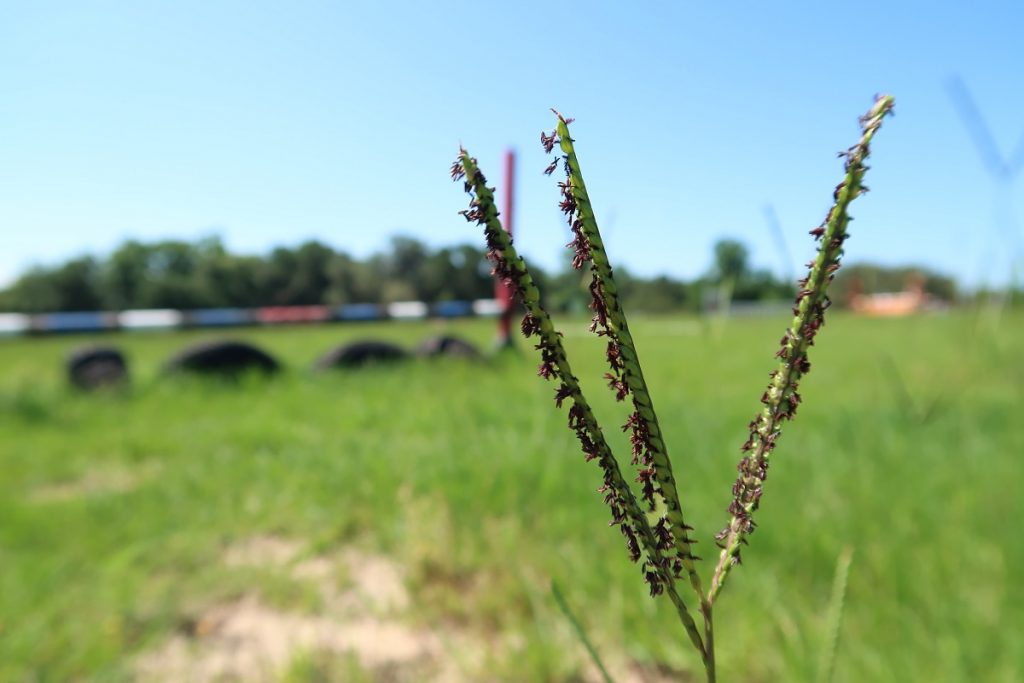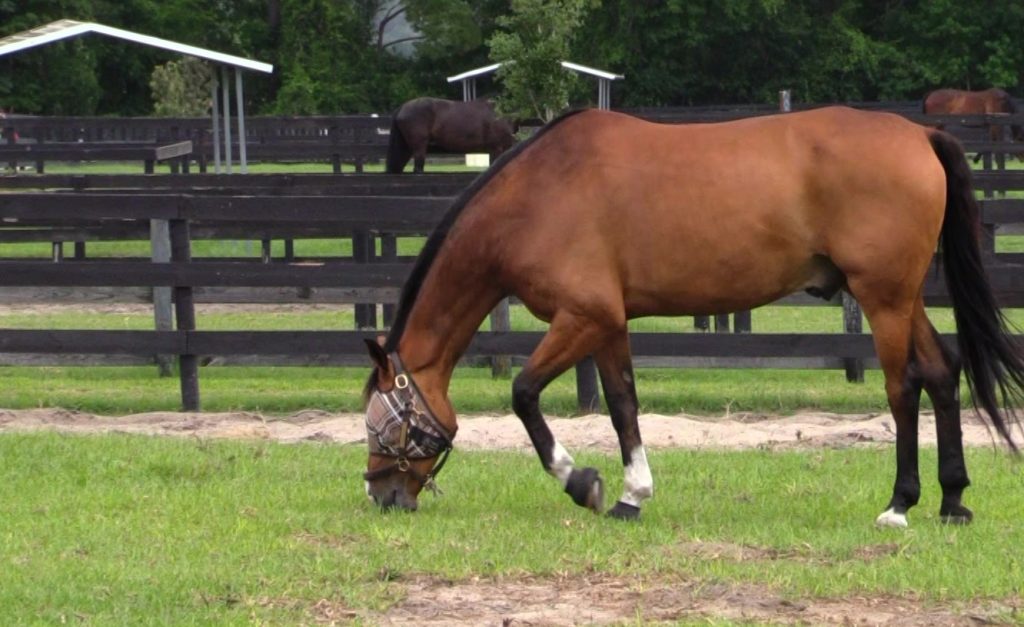Tuesdays with Tony
There’s a plague arriving soon. Well, some think it’s a plague, some are grateful, and most of you are in between. I’m talking grass seed heads. Here in North Central Florida, these pop up on a stalk, looking like the letter V waving in the non-existent summer breezes. Seed heads in your area of the country may look different, but they exist all over and summer is their season! My cat self is rather indifferent to the presence or absence of seed heads. However, my Docs can get pretty worked up over these things. This week, let’s talk all things grass seed head. Who knew this could be a blog topic!
The one good thing
This will be short. Seed heads are the grass reseeding itself. This helps your pasture stay full of lush, thick, grass year after year without having to reseed it yourself. This is a good thing. I mean it’s a really, really good thing to do, so don’t think I’m discounting the goodness of seed heads. We are now done with good things.

Eyeballs
Why oh why must horses have big, beautiful bug eyes on the side of their heads??? I am a wise cat. I know the real answer is so that they can see predators coming at them across the savannah for miles and miles. The problem is those eyes are right at seed head level. Those seed heads love to drop right in there and stay for a while. Not being graced with fingers, your horse will have a very hard time getting the seed head out of their eye. This leads to a couple less than ideal options.
The first involves your horse rubbing their eye on anything and everything they can find until they rub that seed head out, and likely develop an ulcer. As their human, you will usually notice some swelling and tearing the next time you see your horse. You may also notice a small white spot, generally around the edge of the cornea somewhere. This should be treated as an emergency, and you need to call my Docs immediately. It doesn’t necessarily mean they are going to come out, but they do want to talk to you about any and all eye things as soon as you find them! These ulcers are usually small, and respond readily to a few days of ointment and anti-inflammatories.
The second scenario is by far my favorite. That seed head doesn’t get dislodged by your horse’s attempts. Instead, it gets stuck to the cornea, and the eye tries to dislodge it by growing tissue under it. At some point in this process you will notice what appears to be a brown bump in your horse’s eye, again usually near the edge. It’s amazing to me that there is often no other sign. Your horse may not be squinting, or have a runny eye. I’ll be honest, this is one of my favorite things to supervise here at the clinic. Why? Because it’s pretty easy and fun to fix. My Docs will put some numbing drops in the eye, give the horse a little sedation so they don’t move, and then pop the offending seed head off with a needle. There’s usually a tiny, tiny ulcer underneath the seed head, so the Docs will send you home with a few days of eye ointment, but that’s it. Off they go to heal perfectly.
What to do? Make sure your horse goes out with a fly mask! While keeping flies and gnats away from their eyes and ears, it will also keep other unwanted visitors out, like grass seeds. Mowing is also an option, but we’ll talk more about that in a minute.

So, so delicious
Moving on to the next problem with seed heads: calories. I’m going to talk mostly about bahia grass since that’s what we have here in Florida, but it’s not that different around the world. When those seed heads start popping up, they bring a whole lot of calories to the party. Ever seen your horse out in the pasture not even bothering to take their nose to the ground? They walk along eating only the tall seed heads. That is weight gain taking place in front of your very eyes.
As a, umm- larger- member of the domestic cat family, I get it. Delicious food is delicious food and it’s awfully hard to say no to good eats! Those seed heads aren’t just full of calories, though. They’re also full of sugar. I’m a fully-fledged member of the diabetic cat club, so I know this is bad. I also know horses don’t get diabetes, but sugar is still bad. That’s because all those sugars cause the release of something called IGF (insulin-like growth factor), and that messes up a lot of things in the body.
There are many strategies to reduce those seed heads. Mowing is a fun one. Keeping the seed heads mowed down is a great way to prevent them from going directly into your horse’s belly. It is recommended to let the grass fully go to seed at least once yearly to let it reseed itself.
Grazing muzzles are another great way to limit the seed heads that go in your pony. My final recommendation is one I avoid at all costs: exercise. As little as 15 minutes three times weekly can prevent many of the side effects of weight gain. Evaluating your lifestyle will help you choose the option or options that work best.
Grass is wonderful. Horses were literally designed to eat it. Like all things horse, they can take something good for them and turn it into something disastrous. Keep an eye on those eyes, and watch that weight for a happy, healthy summer co-existing with seed heads.
Until next week,
~Tony
P.S. Looking for more great horse knowledge? In addition to the hundreds of blog posts filled with my cat wisdom, we also have a fantastic free podcast that will change your life. You can find it over on the Podcast Page of my website. We also have books and videos that the humans have worked hard to share with you, under my supervision, of course. You’re welcome. You can thank me with a chin scratch next time you come by the Clinic.
Tuesdays with Tony is the official blog of Tony the Clinic Cat at Springhill Equine Veterinary Clinic in Newberry, Florida. If you liked this blog, please subscribe below, and share it with your friends on social media! For more information, please call us at (352) 472-1620, visit our website at SpringhillEquine.com, or follow us on Facebook!
[jetpack_subscription_form title="Subscribe to Whinny's Wisdoms"]

